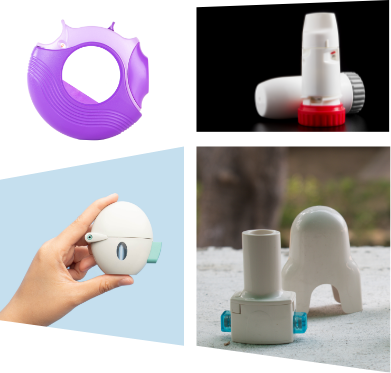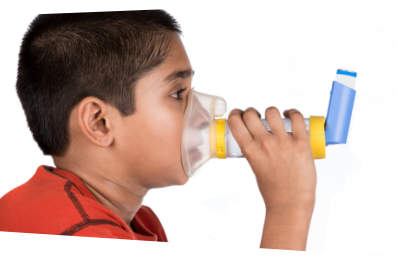Asthma is a chronic respiratory disease that affects the airways in the lungs that touches over 262 million people globally. It is also the most common chronic condition among children . It can make it harder to breathe and causes coughing, wheezing, or a tight feeling in your chest.
Well, imagine your lungs are a tree with many branches, called airways. Each airway has a lining called the mucous membrane, which helps protect your lungs from germs, dust and other allergens. There are tiny muscles wrapped around the airways that can constrict or relax and change the size of the airways.
People with asthma have airways that are more sensitive than usual. So when they are exposed to certain triggers, like smoke, pollen, or even stress, their airways can become inflamed and produce extra mucous. This makes it difficult to breathe.
But the good news is, people with asthma can still live normal, active lives. In fact, some of the most successful athletes and professional football players have asthma.
While there is no cure for asthma, there are ways to manage it. By working with your doctor to create asthma management plan and avoiding triggers wherever possible, you can keep your asthma under control and continue to live a healthy, active life. So, don’t let asthma hold you back and head out for your next big adventure.
References:
What is Asthma. Accessed on: 23 May 2023.
Available from: https://www.nhlbi.nih.gov/health/asthma
Asthma. Accessed on: 23 May 2023.
Available from: https://www.who.int/news-room/fact-sheets/detail/asthma.
*Global burden of 369 diseases and injuries in 204 countries and territories, 1990-2019: a systematic analysis for the Global Burden of Disease Study 2019. Lancet. 2020;396(10258);1204-22
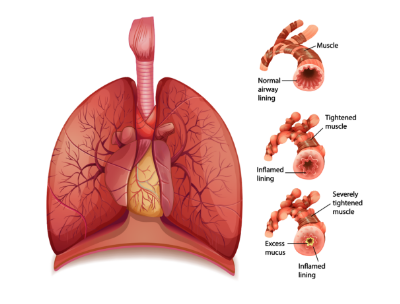

Although asthma symptoms may vary from time to time and from person to person, here are the main signs you need to look out for:
Some people may have all of these symptoms. Others may experience just coughing or wheezing, or a combination of some of the symptoms.
References:
Asthma symptoms. Accessed on: 23 May 2023.
Available from: https://www.nhlbi.nih.gov/health/asthma/symptoms
References:
Asthma attack. Accessed on: 23 May 2023.
Available from: https://acaai.org/asthma/symptoms/asthma-attack/
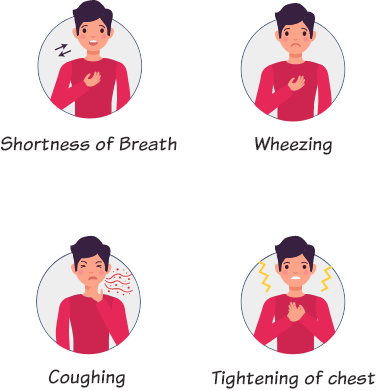
References:
Asthma causes and triggers. Accessed on: 23 May 2023.
Available from: https://www.nhlbi.nih.gov/health/asthma/causes
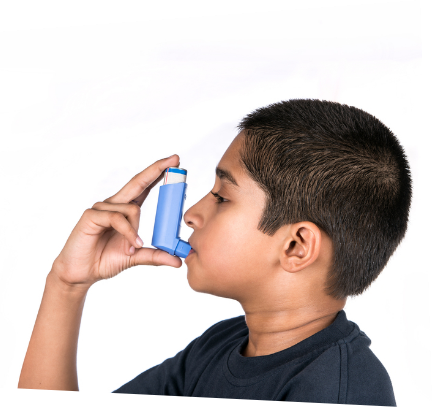
Also called “preventive medicine”, this has anti-inflammatory properties that can help keep your asthma under control. It targets both domains of asthma control i.e. symptoms and risk. It is designed to prevent the thin membrane inside your airways (breathing tubes) from getting swollen or filled with mucous. It does not give immediate relief, but when used over a period of time, it controls the redness, swelling and mucous production. This makes it easier for air to flow in and out of your lungs. Controllers contain a low dose of an inhaled corticosteroid, which makes them safe. Your doctor may decide to increase and adjust controller medicines when your asthma symptoms get worse and they help to prevent attacks.
If you’ve got asthma, there are medicines called as reliever, that are taken only as needed. They can give you quick relief and make breathing easier. They work by relaxing your muscles and open up your airways so you can breathe better. But there’s another side to this – they work only for a short time, say 4-6 hours. They only help to relieve your symptoms but cannot reverse the inflammation (swelling) in your airways that are the actual cause of these increased symptoms. So if you find yourself using your reliever a lot, it could mean that your asthma isn’t under control. That’s when you should talk to your doctor in order to figure out a better plan. But don’t forget – always have your reliever, as advised by your doctor, with you when you’re out and about. It can truly save the day if you ever have trouble breathing.
These are reliever inhaler that contain both a low-dose ICS and a rapid-acting bronchodilator.
This is a treatment regimen in which the patient uses an ICS-formoterol inhaler every day (known as a maintenance dose) and also uses the same medication as needed for relief of asthma symptoms (known as reliever doses). This can be used only with ICS-formoterol inhalers and as per the advice of your doctor.
P.S: Inhalers are widely considered to be the best way to treat asthma and are safe to use. If you have asthma, consider using inhalers regularly as advised by your doctor, to breathe properly and lead a normal, active life.
References: GINA 2023 - https://ginasthma.org/2023-gina-main-report/
